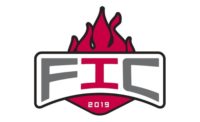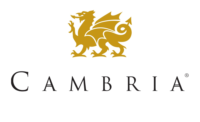“It really is a great first step toward being included in the building codes,” said outgoing association president Peter Balint, of Dryvit Systems Inc. “I think everybody on the technical committee and EIMA board needs to be recognized for this accomplishment.”
A longstanding objective of the association, the national consensus standard constitutes one of the most important achievements of the association in its 20-year existence, but only one of many progressive steps that EIMA has undertaken as it has moved beyond the spectre of moisture intrusion litigation. The positive strides the association has taken over the past year—as well as those it has charted for the future—serve as poignant reminders of how the association has grown to become a vital and effective industry organization.
“It’s been 20 years since this organization was formed ... and what we’ve been through is remarkable,” noted EIMA executive director Stephan Klamke during the association’s general session. Borrowing a page from Abraham Lincoln’s “Gettysburg Address,” Klamke added that EIMA has been “energized by a myriad of challenges” and that the association’s experiences in recent years have shown that “challenges hold the promise for new opportunities.
“None of us can afford to be spectators. If EIMA is to continue to be successful, we need the involvement of everybody in this room,” said Klamke. “It is because of our combined efforts that EIMA will continue to flourish and we will remain strong.”
The association’s progress is evident in success of its Gatekeeper Program, wherein EIMA has made a concerted effort toward educating those industry groups that influence the acceptance of EIFS cladding—including corporate relocation executives, insurance underwriters, home inspectors, realtors and lenders. Over the past year, the Gatekeeper Program has resulted in more than 30 live presentations with industry groups and dozens of favorable articles in trade publications, while a series of roundtable meetings with industry leaders confirmed that EIMA has made strides with its educational efforts.
“Virtually every one of the business leaders recognized that EIFS had been an unfair target,” noted Bernie Allmayer, account manager for EIMA’s public relations agency, Al Paul Lefton Co.
Continuation of the Gatekeeper Program remains a key priority for the coming year, with the target audience being expanded to include code officials and municipal planning commissions. EIMA’s marketing efforts will also take a more proactive stance, promoting the energy savings characteristics of the cladding in addition to its aesthetic virtues.
“We need to shift as much as we can away from the defensive position,” said EIMA incoming president Macon Lowe, of Sto Corp. “I like playing offense more than defense, and I think we’re ready to do that.”
The association is also looking to take a lead role in groundbreaking industry research. Klamke reported that EIMA has prepared a research grant application in conjunction with Oak Ridge National Laboratories to study the hydrothermal performance of EIFS-clad wall assemblies. The study, with a budget of nearly $1.4 million, would be funded largely by the Department of Energy, and if successful, would provide the most detailed analysis ever of how EIFS-clad wall assemblies perform in different climates.
“The interesting thing about this is EIMA will be the prime contractor,” said Klamke. “We should know by October if our application is successful.”
Another priority for the association is establishment of an insurance program for its members to counter an industry trend of higher premiums and coverage exclusions for contractors and builders who work with EIFS (see sidebar). EIMA is working with Jack Bailey, of Premier Risk Services, to develop the program, that would be controlled by EIMA and open only to association members.
The association continues to chart progress through the efforts of its technical committees, including ongoing standards development through both ANSI and the American Society for Testing and Materials. In addition to ANSI’s approval of EIMA 99-A as a new consensus standard, over the past year the association saw the creation of two new EIFS-related ASTM standards—E2098-00, a standard test method for glass fiber reinforcing mesh and C1481-00, a standard for the use of joint sealants with EIFS.
On the codes front, EIMA has had mixed results. In its work with the national code bodies, the association played a pivotal role in drafting an EIFS chapter for the new National Fire Protection Association model code. However, the association is currently attempting to fight out a modification to that chapter submitted by Factory Mutual Inc. requiring an inside corner fire test for EIFS.
At the local code jurisdiction level, the association continues to fight EIFS restrictions being considered in Chicago. EIMA successfully stopped a proposed ban on EIFS, but is now fighting to defend a code restriction limiting adhesively applied systems.
“One of the things we’re focused on is the variety of opportunities to promote the industry through the code organizations,” said technical committee member Peter Harrison, of Parex. “It requires our vigilant and persistent effort, and I guarantee that’s what we’ll have.”
In other matters, Burt Templeton, of BASF Inc., was named EIMA’s Member of the Year. The association also honored past presidents that helped guide EIMA during its first 20 years. Two-time past president Buck Buchanan, of Parex, presented special commendation awards to Dorothy Roberts, of Pleko Systems International Inc.; Bob Olson, formerly of TEC/H.B. Fuller; and Francois Bouan, of Parex.
The association board also approved a new slate of board members and officers.
Manufacturer board members are: Lowe (president); Peter Balint, of Dryvit; Francois Bouan (secretary); Dorothy Roberts; Jeff Norris, of Tec Inc.; and Mike Boyd, of TEIFS Wall Systems.
Associate board members include Drew Seibert (vice president) of Manning Co.; David Ash (treasurer), of Rohm & Haas Co.; Lloyd Littleton, of JPS Glass; and Fritz Reitter, of Reitter Stucco.
Fred Woolard, of Woolard Brothers Inc., remains the voting contractor member of the board. Returning ex-officio contractor members are George Adams, Texas Acrylic Finishes, Inc.; Danny Bonnell, of Commercial Wall Systems; and Michael Grasing, of Grasing Associates Inc.
EIMA undertaking insurance initiative
In an effort to buffer an insurance trend of rising premiums and reduced coverage for EIFS applicators, suppliers and manufacturers, the EIFS Industry Members Association has taken the initial steps in creating an insurance alternative for its members.The association is working with Premier Risk Services, of Norcross, Ga., to develop an EIMA-owned and -controlled insurance plan specifically for association members. If successful, the program would provide EIMA members a cost-economical source of property, liability and other insurance coverage.
“Our objective is to provide members with a firm commitment to coverage and price, and to strengthen the relationship with insurance underwriters,” explained Jack Bailey of Premier Risk Management.
The program is meant to offset a tightening in the insurance market—in part attributable to EIFS litigation—but also due to industry-wide insurance trends.
“Re-insurance costs are rising, return on equity is dropping, stock performance has been pitiful and catastrophic losses are continuing to rise,” explained Bailey. “As a result, companies are raising premiums and reducing coverage.”
The new program—tentatively called “EIMA Pro”—will allow EIMA’s members to pool their insurance premiums in order to exercise leverage with insurance underwriters. According to Bailey, the program will be able to provide better coverage at better rates, and will made available through independent insurance agents in all 50 states. The insurance will only be available to EIMA members in good standing. Bailey has submitted proposals to six major insurance underwriters and is awaiting their responses.
“We are directly working with insurance companies to get a feel for their interest in the program,” said Bailey. “Within the next 30 to 40 days we should have an indication of what (the underwriters) are willing to do, and we will know by mid-June if it will hit the streets.”
–Greg Campbell



Report Abusive Comment